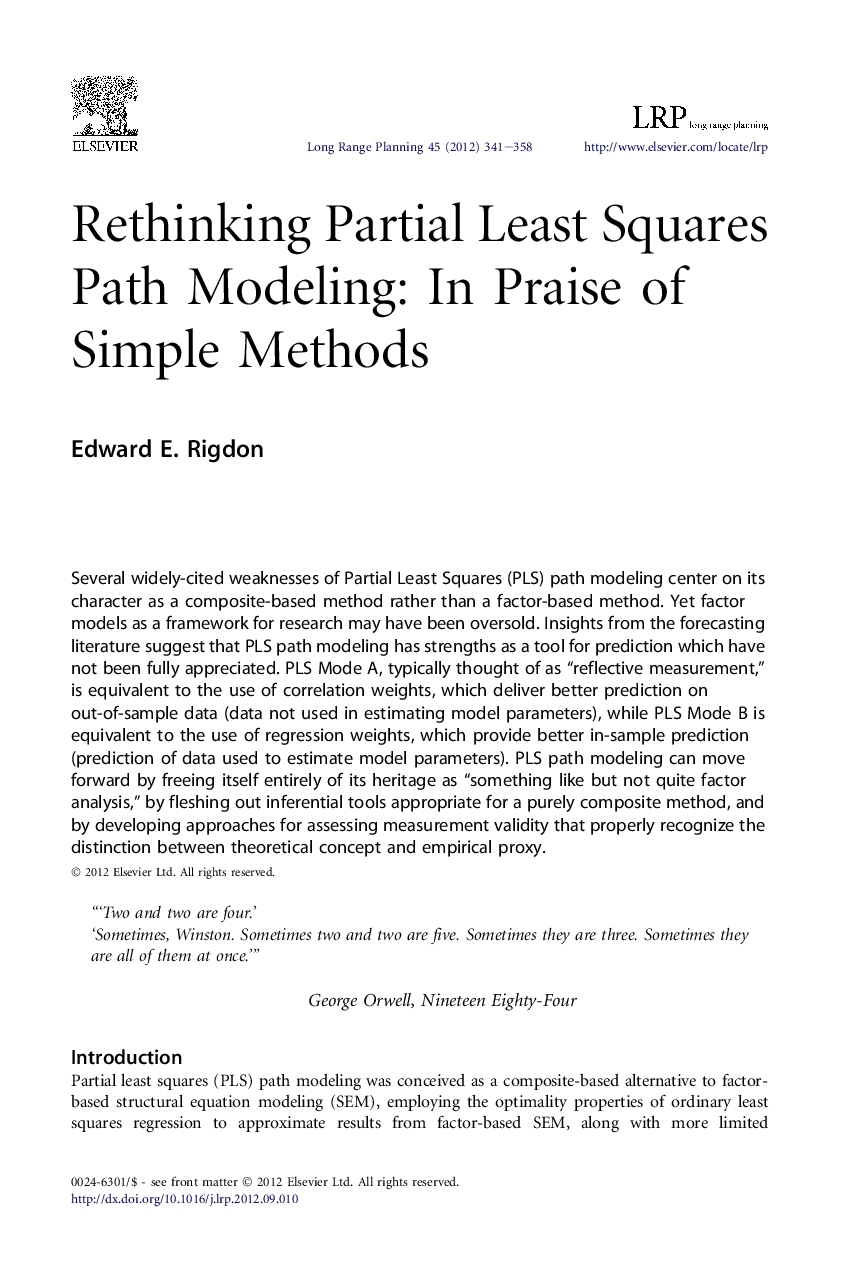| Article ID | Journal | Published Year | Pages | File Type |
|---|---|---|---|---|
| 1021333 | Long Range Planning | 2012 | 18 Pages |
Several widely-cited weaknesses of Partial Least Squares (PLS) path modeling center on its character as a composite-based method rather than a factor-based method. Yet factor models as a framework for research may have been oversold. Insights from the forecasting literature suggest that PLS path modeling has strengths as a tool for prediction which have not been fully appreciated. PLS Mode A, typically thought of as “reflective measurement,” is equivalent to the use of correlation weights, which deliver better prediction on out-of-sample data (data not used in estimating model parameters), while PLS Mode B is equivalent to the use of regression weights, which provide better in-sample prediction (prediction of data used to estimate model parameters). PLS path modeling can move forward by freeing itself entirely of its heritage as “something like but not quite factor analysis,” by fleshing out inferential tools appropriate for a purely composite method, and by developing approaches for assessing measurement validity that properly recognize the distinction between theoretical concept and empirical proxy.
